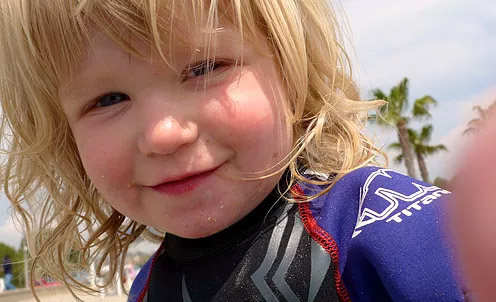|
Get
Involved
Learn how you can get involved with SSAS-C
|
Professionals
We are starting to form special interest SSAS-C groups for
the different professions involved in the care of children,
especially those under 2 years of age. The professionals
in these groups will understand and support the message
of SSAS-C. They will develop materials and strategies to
spread SSAS-C’s message to their colleagues. They
will review the research in their professions in light of
the importance of social-communication, an area often overlooked.
They will be available as speakers for forums for other
professionals, the general public, and for families impacted
by ASD. They will encourage research in their area of study
supporting the ideas of SSAS-C.
In
short, they will spearhead a change in the professional
attitudes and practice of their chosen profession. This
is the change that will focus on social communication, encourage
face-to-face, eye-to-eye communication and at the same time
discourage screen time in all children less than 2 years
old.
Those
professionals who have been impacted personally by ASD and
have reflected on the causes and problems this set of circumstances
brought to them and their families are particularly welcomed
in this role. |
 |
Researchers
The
core of SSAS-C’s mission is research. We are focused on
what leads to and what blocks social development in children less
than 2 years of age. We believe experiences count. We believe
genetics and experiences work hand in hand to make our social
brain work appropriately. We believe positive face-to-face and
eye-to-eye interactions encourage social development while time
spent with non-living objects such as video screens and tablets
delay and block social development.
To
the best of our ability we will provide support and encouragement
to researchers engaged in these areas of research.
| Friends
of the SSAS-C
People concerned about ASD can do a great service to their
families, friends, and others by sharing the work SSAS-C
is doing. There is a great deal of misunderstanding and
mystery concerning ASD. Even the most commonly used symbols
for ASD features puzzle pieces, for instance ‘Autism
Speaks’. Most people feel ASD is beyond their understanding
and they are powerless to detect or to prevent their children
from developing this frightening condition.
Those
of us who are involved in SSAS-C can help by challenging
these disempowering assumptions. The idea that exposing
babies, infants, and toddlers to television, tablets, ap’s
and other video screens could be dangerous and lead to ASD
is novel. But it is an idea whose time has come and needs
to shared with family, friends and others.
Those
of us who are involved in SSAS-C can help by encouraging
parents and other caregivers to be sensitive early on to
the quality of eye-contact and later on to joint attention
especially in their boys. We can encourage our patients
to be sensitive to when their children prefer non-social
to social activities such as when they would rather play
with an electronic toy rather than play with us.
|
 |
Those
of us who are involved in SSAS-C can bring these same ideas to
local forums and discussions about ASD. Other voices need to speak
when people advocate for more technology for very young children.
People need to object to television, commercials, ap’s and
electronic toys aimed at these defenseless young children. Local
people can formulate a local take on these issues and get their
voices heard on local media. These ideas may seem a little ahead
of their time or ridiculous to some people. But there is no shame
in trying to prevent ASD.
We
all need to change the current mind set from blind optimism about
the role of technology in our children’s life and get back
to the importance of face-to-face and eye-to-eye communication.
This is especially so for those most vulnerable to ASD, boys less
than 2 years of age. SSAS-C will develop the evidence to show
the damage and destruction this technology is doing to our children.
It will take thousands of voices to make it happen but as the
evidence starts to pile up, more and more people will join us
speaking up and objecting to the technology that enchants babies,
infants and toddlers away from their caring families.
SSAS-C
stands by to help anyone and everyone to get the message out and
to respond to criticism.
Please
donate whatever you can to help accomplish our mission. You will
be helping to prevent ASD in future generations.
Thank
You.
|